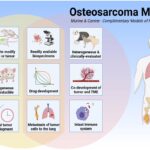
There are many nervous systems in the human body. Which have different functions and help the body to move forward. The most important system of the body is the human digestive system. It helps in digesting the food entering the body and seeing whether the digestion process is happening properly or not. So let’s have an idea about the human digestive system.
Table of Contents
Definition of the human digestive system
It comprises an alimentary canal and accessory glands, forming the human digestive system. The alimentary canal is made up of mouth, oral cavity, pharynx, esophagus, stomach, small intestine, colon, rectum and anus. The accessory digestive glands are the salivary glands, liver (including gall bladder), and pancreas.
The digestive system of humans consists of a variety of organs and sub-processes that together make it possible to digest food. Forms the alimentary canal and associated glands for the digestive system. The alimentary canal (digestive tract) consists of tube-like structures that form a passage from the mouth to the anus.
Major organs of the digestive system
The list of major organs of the digestive system is given below:
Mouth
Esophagus
Stomach
Pancreatic
Liver
Gallbladder
Small intestine
Large intestine
Rectum

Gall bladder
In the human digestive system, the gall bladder gland is in the stomach. These glands discharge hydrochloric acid and gall bladder juice and hydrochloric acid makes the food acidic.
Salivary gland
The salivary gland is located in the mouth. There are three types of salivary glands in humans which discharge saliva. The enzyme present in saliva is called salivary amylase, which breaks down starch in the mouth. In Manav Pachan Tantra, saliva also moistens the food while passing through the esophagus.
Intestinal glands
There are many types of glands in the wall of the small intestine. The enzymes flowing from these glands are responsible for the digestion of food.
Liver
It is the largest gland found in humans. Bile fluid is discharged from the liver which is in the gall bladder. It is helpful in digestion. The main function of bile fluid is to break the fat into smaller parts and make it digestible so that it can be easily digested. In Manav Pachan Tantra the acidic food of the stomach now becomes alkaline.

Pancreas
In the human digestive system, it is the second largest gland after the liver. It is located in the ring of the duodenum. IIt secretes pancreatic juice, which is rich in enzymes that aid in digestion. Trypsin and Chymotrypsin help in the breakdown of proteins. Amylase breaks down polysaccharides. Lipases are helpful in the breakdown of fats and nucleic acids. The pancreas is a long gland located between the U-shaped duodenum that functions as both an exocrine and endocrine gland.
The exocrine portion secretes alkaline pancreatic secretion, which contains enzymes and hence the secretory portion secretes hormones called insulin and glucagon.
The digestive enzymes that are brought into the duodenum and ileum are catalysts in the breakdown of alkaline foods.
Intestinal glands secrete intestinal juice.
Bile is secreted from the liver cells which are concentrated and stored in a thin muscular sac called gall bladder through the hepatic duct.
Buccal cavity
It opens into a small pharynx which is a passage for air and food. A cartilaginous valley prevents food from entering the trachea when swallowed. Esophagus is a straw-long tube, that passes through the neck and diaphragm and opens into the sac-like stomach at the back.
In the human digestive system, the small intestine has three parts –
J’ shaped duodenum
Coiled mid-section interior scrotum
long clumped ileum
The exit of the stomach into the duodenum is controlled by the pyloric block. The small intestine opens into the large intestine which is made up of the caecum, colon, and rectum.
Alimentary canal
The alimentary canal starts from the mouth in the front part and the anus located in the back part, which is 9 meters long, opens outwards. The mouth opens into the oral cavity. The oral cavity contains 32 teeth and a muscular tongue. Each tooth is located in a mold made in the jaw. In Manav Pachan Tantra this kind of arrangement is called Gartadanti (trough).
Most mammals, including humans, have two types of teeth in their lives. The temporary set of teeth or baby teeth that are replaced by permanent teeth in adults. This type of dental arrangement is called diphyodont. In Manav Pachan Tantra, an adult human being has 32 permanent teeth, which are of four types, such as –
Incisors
Canine
Premolars
Molars
The arrangement of teeth in each half of the upper and lower jaws in incisors, canines, premolars, and molars is according to a denticle which is for humans.
The hard chewing surface of teeth made of enamel helps in chewing food. The tongue is a freely movable muscular organ attached to the base of the oral cavity by a frenulum. On the upper surface of the tongue, there are papillae and papillae in the form of small projections, some of which have taste buds.
Absorption
After digestion, the food particles become smaller and pass through the small intestine into our blood. The small intestine absorbs digested food. The inner surface of the small intestine contains millions of finger-like projections called villi. In Manav Pachan Tantra these provide a larger surface area for absorption and the digested food passes into our blood.

Assimilation
Blood carries the digested and dissolved food to all the organs of the body, where it is incorporated into cells. The cells of the body use the ingested food to obtain energy as well as for growth and repair of the body. Undigested food is stored in the liver in the form of carbohydrates called glycogen and can be used by the body when needed.
Five functions of the digestive system are?
The digestive system performs the following 5 functions:
Mechanical processing
Digestion
Absorption of food
Discharge of water
Excretion of acids, enzymes, buffers, salts and waste products
FAQ
Which is the main part of the human digestive system?
The human system of digestion comprises accessory glands and the alimentary canal. The alimentary canal is made up of mouth, oral cavity, pharynx, esophagus, stomach, small intestine, colon, rectum and anus. The accessory digestive glands are the salivary glands, liver (including gall bladder), and pancreas.
What are the functions of the liver?
The liver is an organ of the body, which is found only in vertebrates. Its function is to detoxify various metabolites, synthesize proteins, and produce biochemicals necessary for digestion.
Where does total food digestion take place?
The small intestine is the part of the human body that digests food. It is part of the gastrointestinal tract, but it is more so an organ in which most nutrient and mineral absorption from food happens. Between the stomach and the large intestine is where the small intestine is located, absorbing bile and pancreatic juice through the pancreatic duct to supplement digestion.
Conclusion: Maintaining a Healthy Digestive System
It has to do with breaking down food and absorbing nutrients and waste elimination-pretty important to the human body. Therefore, understanding the role of the digestive system functions is very important to keep everything in order.
It begins from the mouth, where food is chewed and broken into smaller parts by saliva; then it is passed on to the esophagus and then into the stomach, followed by the small intestine, large intestine, the liver, pancreas, and gallbladder-all important steps in digestion.
It has to do with breaking down food and absorbing nutrients and waste elimination-pretty important to the human body. Therefore, understanding the role of the digestive system functions is very important to keep everything in order.

It begins from the mouth, where food is chewed and broken into smaller parts by saliva; then it is passed on to the esophagus and then into the stomach, followed by the small intestine, large intestine, the liver, pancreas, and gallbladder-all important steps in digestion.
It is also prone to some other common digestive disorders in the digestive system like It is in this part of the gastrointestinal system that some diseases begin their origin, such as gastroesophageal reflux disease, irritable bowel syndrome, Crohn’s disease, ulcerative colitis, and cancer of the colon. Such diseases can create a wide range of symptoms from abdominal pain and bloating to diarrhea, constipation, and at times an unusual loss in body weight.
Such diseases can create a wide range of symptoms from abdominal pain and bloating to diarrhea, constipation, and at times an unusual loss in body weight. Treatment of such disorders requires seeking medical advice and sticking to the course of treatment.
To maintain a healthy digestive system, it is important to focus on how to improve digestion through lifestyle changes. It has some control over the intake of an adequate amount of a diet that is rich in fiber with adequate hydration, regular exercise, and stress management.
Maybe there would be some kinds of food or types which would cause the digestive problems, and if those are to be avoided and portions to be controlled and maintaining a healthy weight, then the digestive problems need not occur.
Here are some digestive health tips to keep in mind:
Consume slowly, ensuring one chews adequately.
Be as active as you can since exercise actually affects bowel movements
Hydration is important; drink water all day.
Processed foods, fizzy drinks, and alcohol are among things that you should avoid ingesting too much of.
Reduce stress. Relieve stress by meditating or deep breathing.
Understanding the functions of the digestive system, knowing common disorders of the digestive system, and practicing healthy habits will take care of the digestive system and, in turn, bring a person a better quality life. Regular check-ups with a health care provider will also help diagnose potential issues as soon as they start.
In this article on the human digestive system, you came to know about how the digestive system works in the body. If you liked this article, do share it with your family and friends. Stay tuned to Healthalfa to read more such interesting, informative, and engaging posts.
Disclaimer
In this article, information related to a particular topic has been collected from various sources, the purpose of which, is only to increase the knowledge of the readers and it does not confirm the existence of any disease, particular statement, explanation, appropriateness, congruity, and information or any kind of treatment. Health Alpha does not take any responsibility for any such information.
Views: 2














Pingback: Liver-6 Ways to keep it healthy.Don't ignore it.Unlock it